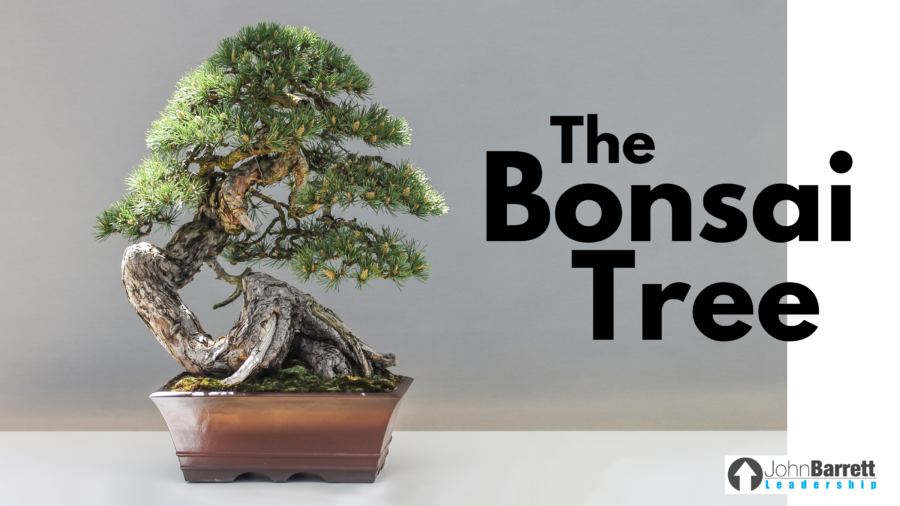The Bonsai Tree
Growing up, my family and I went to the state fair every year. The summer humidity made it so hot as we walked for miles around the fairgrounds. I always looked forward to escaping the heat by visiting the air-conditioned Exposition Building. This was a huge warehouse full of hundreds of vendors selling every type of gadget and gizmo imaginable. I will never forget the year that we came across a booth selling Bonsai trees. These trees were fascinating, and since I was a die-hard fan of the movie The Karate Kid, I had always wanted to be like Daniel LaRusso, planting Bonsai trees with my very own Mr. Miagi. I figured this was my opportunity.
Somehow, I convinced my parents to purchase a tree for me and I carefully transported my prized possession home. I was now thoroughly convinced that I had been endowed with a mastery of the art of karate simply by becoming the proud owner of my very own Bonsai. Reality soon hit. I had no idea how hard it was going to be to take care of a Bonsai tree. Every day I had to make sure the tree was in direct sunlight for a very specific amount of time; no more, no less. I also had to precisely measure its water intake. And to top it all off, I had to delicately trim my tree with a precision that only Mr. Miagi had mastered. This proved to be much more work than this twelve-year-old karate kid was willing to do. Besides, I needed more time to practice my kicks and punches; I didn’t have time to perfect the art of gardening. You can imagine what happened over the course of a few weeks. Eventually, the tree died, and with it, my dreams of becoming the next karate kid. You see, the tree couldn’t survive without a proper growth environment. Unless it was nurtured and exposed to what it needed to grow, it didn’t have a chance. If I had just kept the tree healthy, I might have been the martial arts master that I dreamed of being.
Just like my Bonsai tree needed sunlight to develop, your team needs exposure to growth opportunities to bloom. Cultivating a fertile growth environment is what separates successful companies from average ones. Every gardener knows you have to water what you want to grow. When you plant a tree in a small pot, it will stop growing once it reaches the walls of the pot. The tree is not the problem; it’s the environment that is limiting growth. To grow the tree, you have to put it in an environment that will allow it to develop without borders. The more room there is for growth, the larger the tree can become. Likewise, people need the proper surroundings to fully develop into highly effective leaders. Author Napoleon Hill said, “We begin to see, therefore, the importance of selecting our environment with the greatest of care, because environment is the mental feeding ground out of which the food that goes into our minds is extracted.”
Failing to create an environment where people are growing will slowly erode morale and stifle progress. As a leader, it is your responsibility to build a developmental greenhouse for your people to become everything they’re capable of. When leaders water the seeds of potential in others, productivity increases. Your organization will only be as good as the people running it. If you want your organization to be great, you have to equip your people to be even greater.
“If you want your organization to be great, you have to equip your people to be even greater.”
John Barrett
Expose your team to resources, ideas, articles, books, people, and anything you can to help them develop their potential. The more you invest into their success, the more they’ll invest back into your success.
*Taken from my book Leadology: 12 Ideas To Level Up Your Leadership. Get a copy today on Amazon Prime in print, ebook, or audio book.










